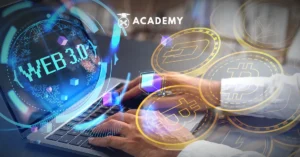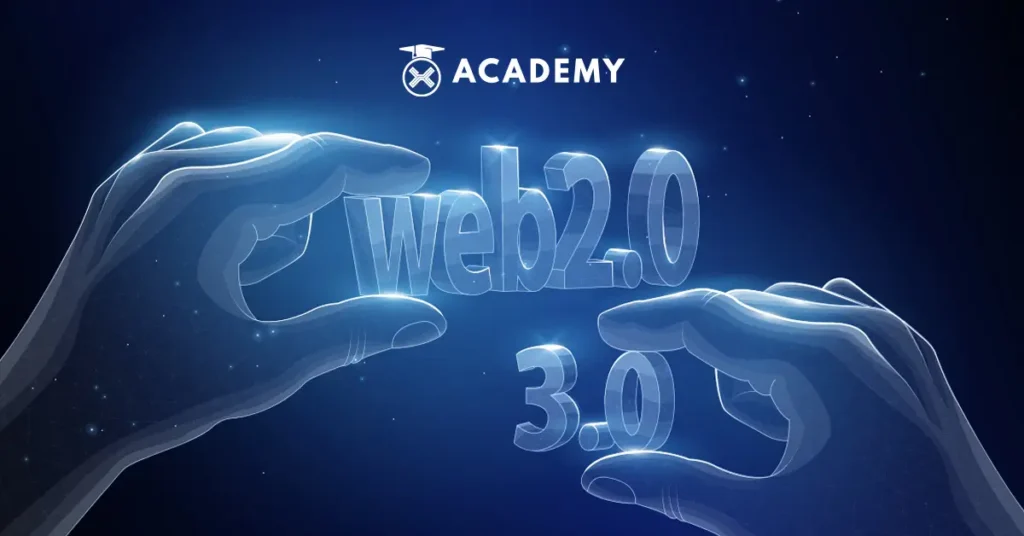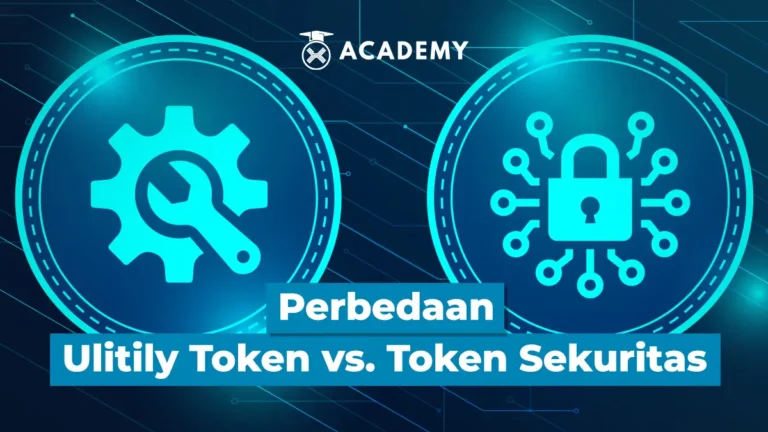Since its first introduction, the internet has undergone an impressive evolution. From the Web 1.0 era to the present, we have witnessed substantial changes in interaction patterns and online technology use.
The two main stages that have grabbed attention in the development of the internet are Web 2.0 and Web 3.0. To understand the differences between Web 2.0 and 3.0, their benefits, and their future, check out the full review below!
Getting to Know Web 2.0
Web 2.0, also known as the “Social Web,” refers to the internet development that occurred around the mid-2000s.
In this era, the internet experienced significant changes in the content that users could create and consume. Here are some of the characteristics of Web 2.0, namely:
- User Involvement: Web 2.0 facilitates active user involvement in creating, sharing, and consuming content. Individuals can create blogs, videos, photos, and various other types of content independently.
- Collaboration and Social Networking: The development of social media platforms, such as Facebook, Twitter, and LinkedIn, allows users to connect, interact, and share content with other individuals in different parts of the world. Social networking is an important aspect of the Web 2.0 era.
- Web-Based Applications: The existence of browser-based web applications, such as Gmail, Google Maps, and Dropbox, opens up opportunities for users to use sophisticated applications directly through the browser without requiring software downloads.
- Improved User Experience: Better, responsive, user-friendly interface designs enhance user interactivity and comfort in interacting with various websites and applications.
Web 2.0 Technology and Apps
Some of the Web 2.0 technologies and applications that need to be known are as follows:
- Web Browser Development: There has been a significant increase in website interaction and dynamics.
- Social Media: The emergence of platforms like Facebook, Twitter, and LinkedIn that facilitate social interaction and content sharing.
- E-commerce: Rapid growth of e-commerce platforms and marketplaces that enable online transactions and electronic commerce.
- Web-based Applications: Innovations in applications such as photo editing, video streaming, and blogging platforms that give users the ability to create and share content online.
Web 3.0: Era of Decentralization and Blockchain

Web 3.0 is a new idea in the evolution of the web that emphasizes the vision of a decentralized and fairer internet.
The main goal of Web 3.0 is to overcome various problems that have arisen in the development of the current web (Web 2.0), such as the dominance of large companies, privacy issues, and users’ lack of control over their personal data.
Web 3.0 is rooted in the principles of decentralization, artificial intelligence, and blockchain technology. Here are some of the characteristics of Web 3.0, among others:
- Decentralization: Web 3.0 focuses on developing applications and services not centralized to a single entity. Using blockchain technology, applications can operate distributedly without a central authority controlling them.
- Smart Contracts and Blockchain: Blockchain technology enables the implementation of smart contracts that can be programmed to execute agreements and transactions automatically and securely without involving third parties.
- Digital Identity: Web 3.0 aims to give individuals full control over their data and digital identity. Using encryption and decentralization technologies, users can have a secure and accountable digital identity.
- Artificial Intelligence: Web 3.0 also includes using artificial intelligence (AI) for enhanced user experience, personalization of services and smarter data processing.
What Are the Advantages of Web 3.0?
Quoting spiceworks.com, the decentralized structure of Web3, is its main advantage or value to users. Centralized networks will not be rewarded in the next generation of the internet.
A democratic atmosphere where spending is more transparent thanks to a publicly distributed ledger will become fair and trustworthy. Corporate corruption will gradually decrease as a result of this.
It is fair to say that Web3 can potentially improve corporate and government operations. However, due to the magnitude of this shift, it will almost certainly lead to criticism.
While decentralization is one of the biggest benefits that Web3 can offer, others include:
More privacy
Web 3.0 will give priority to security and privacy over surveillance and control. Users will have full control over their data. They have the option to share or keep the information confidential.
Security
Due to blockchain technology and its autonomous structure, Web 3.0 will also be more secure compared to previous versions of the internet.
Hackers will find it very difficult to exploit the network, and even if they do, their activities will be recorded.
In decentralized systems, hacker attacks are still possible, although most blockchains have developed defenses against such occurrences.
Accessible anywhere
Many applications can access data, every device is connected to the web, and services can be accessed anywhere.
Semantic Web
The Semantic Web is the next phase in the evolution of the internet. The Semantic Web enhances the entire experience of web-based platforms.
Users can use semantic technologies to create online data repositories, define vocabularies, and set data management rules.
The technologies that enable connected data are – RDF, OWL, SKOS, and SPARQL.
Technologies and Application Usage in Web 3.0
Web3 leverages distributed ledger technologies such as blockchain to store and process data in a decentralized manner. This brings added value, such as greater security, transparency, and interoperability. Web3 technologies and applications include, among others:
- Blockchain: Web3 leverages blockchain technology to store and process data in a decentralized manner. This brings a revolution in online transactions and value exchange.
- Decentralized applications (dApps): Within the Web3 ecosystem, the development of decentralized applications (dApps) is built on blockchain technology and operates without centralized control like Web2.
- Internet of Things (IoT): Web3 has the potential to integrate seamless communication between devices and IoT systems, enabling greater automation and efficiency.
The Difference between Web 2.0 and Web 3.0

Web 2.0 and Web 3.0 are similar technologies with similar backgrounds but approach the challenge differently.
The fundamental difference is that Web 2.0 focuses on reading and writing content, while Web 3.0 focuses on creating content (Semantic Web).
The latter is much better, utilizing technology to facilitate information exchange among web users while enhancing cybersecurity.
While Web2 aims to connect people, Web3 combines this data with meaning and increases trust.
This happens because of decentralization. Here are some other differences:
Payment
Payments in Web 2 are made in fiat currency. Money issued by the government, such as the US dollar, is used during transactions.
Web3, on the other hand, uses crypto assets, such as Ethereum or Bitcoin, which are encrypted digital assets to fund transactions.
Content Ownership
With Web 2.0, the network assumed control for information storage, causing access issues and concerns about anonymity and online data protection.
Web 3.0 solves these problems by exchanging data in multiple locations simultaneously.
Speed
Web 2 transfers are faster than Web 3 transfers. Web 2 searches for information stored in a fixed place, generally on a single server, using HTTP at a unique web address. Web3, on the other hand, assigns ownership to multiple parties (decentralized).
Technologies
The most common Web2 technologies include – AJAX and JavaScript, HTML5, and CSS3. ML, deep learning, semantic web, and decentralized technologies drive Web3.
Applications
Web2 includes podcasts, social bookmarking, blogs, RSS feeds, and video sites. Web3 includes dApps powered by AI and machine learning, virtual worlds, and 3D portals.
The Future of the Web 3.0 Internet
Quoting spiceworks.com, here is the future of the Web 3.0 internet that needs to be known, among others:
- Challenges and Potential for Transformation in Various Aspects of Life: Web 3.0 has the potential to provide important transformations in various aspects of life but is also faced with various challenges that need to be overcome.
- Digital Economy: Web 3.0 brings the concept of a decentralized economy where users play a more active role in the digital ecosystem, including value creation, distribution, and exchange.
- Content Creation: In Web 3.0, content creators can directly monetize their works without going through intermediaries. This gives them more control and incentive to keep creating.
- Privacy and Security: Web 3.0 promises stronger measures to safeguard user privacy and enhance data security through encryption technologies and decentralized data control mechanisms.
- Trust and Authenticity: Using blockchain technology, Web 3.0 can facilitate more effective verification of the authenticity of information, helping build trust among users in an increasingly complex digital environment.
Conclusion
In conclusion, the evolution of the internet from Web 2.0 to Web 3.0 marks an important shift in the online technology paradigm. Web 2.0 itself pays attention to user involvement in creating and sharing content.
Meanwhile, Web 3.0 highlights decentralization, security, and building a decentralized ecosystem based on blockchain.
Future challenges include addressing the technological complexities involved in Web 3.0 implementation, strengthening privacy and security measures, and ensuring user access and participation inclusiveness in a decentralized digital economy.
On the other hand, the potential changes of Web 3.0 include the development of a more equitable digital economy and increased trust and authenticity of information.
In addition, Web 3.0 also provides opportunities for individuals to control and monetize their work directly.
That was an interesting discussion about the differences between Web 2.0 and Web 3.0 and its future. You can also read various collections of interesting articles about blockchain technology on INDODAX Academy, and hopefully, the information above can be useful!








